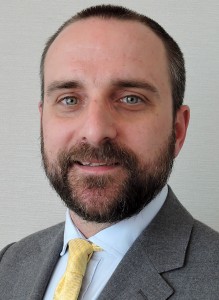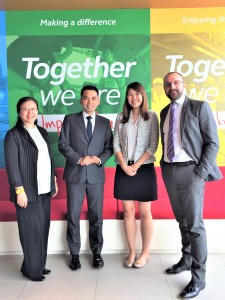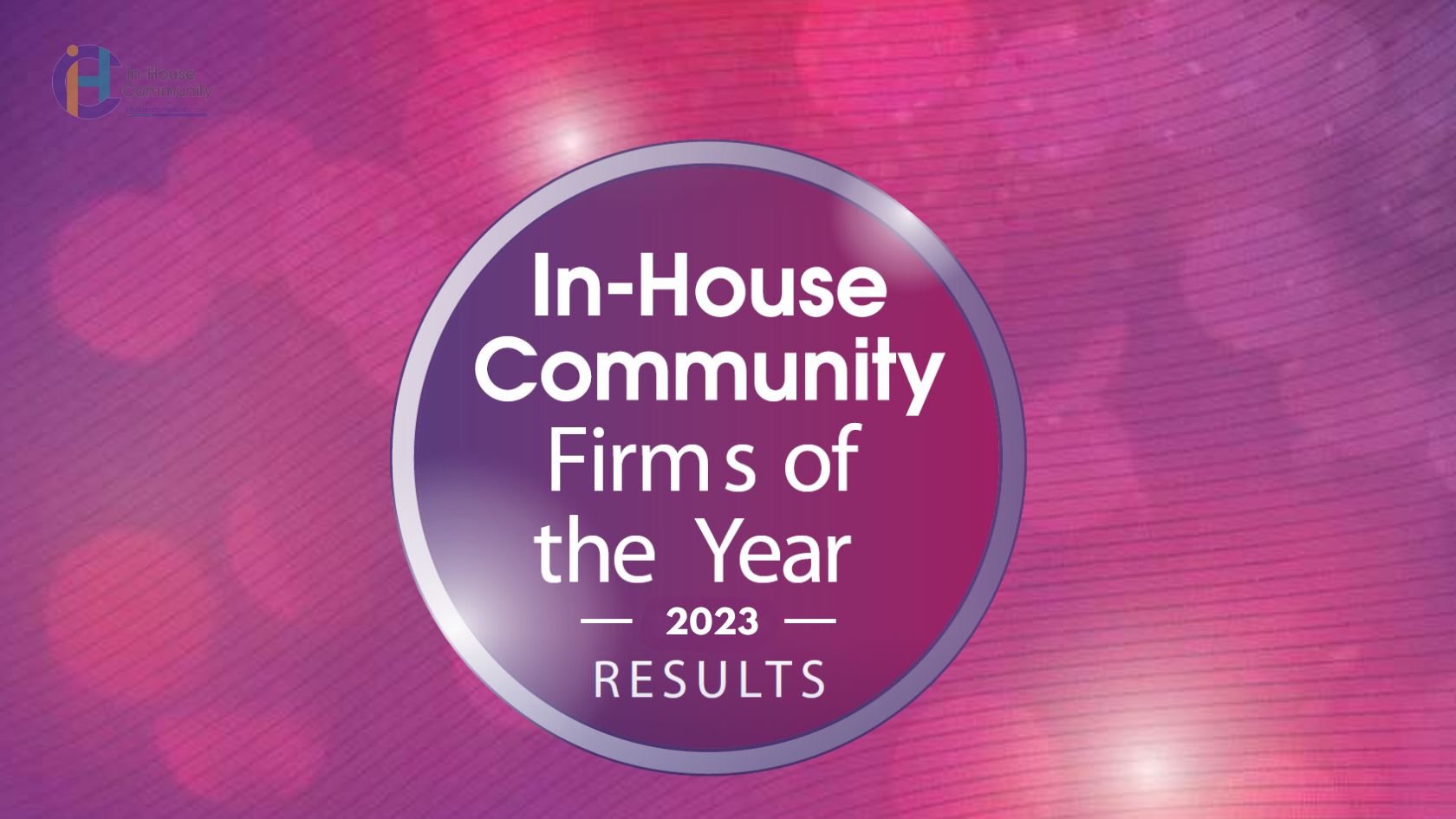The general counsel of Arcadis Asia discusses effective in-house functionality and how he has worked to build a legal team that is fit for purpose.
I’m a relative newcomer. I started my in-house journey four years ago. Fresh faced and without pre-conception. After 12 years in private practice as an infrastructure finance/commercial lawyer, I was handed a clean slate by my new employer and tasked with building a lean and keen in-house function for a leading global design and engineering business to serve its Asian operating footprint.
In my tool bag I had a passionate alignment to my new employer’s core values (integrity, people first, client success, collaboration and sustainability); the feeling that it was time to step up and make a difference; years of experience on large, multi-stakeholder transactions with a focus on closing out an end-game; my legal skills (a given!) and objectivity; and, most important, on a personal-level, the backing of my wife.
I wanted to map out some reflective thinking from lessons I learned at this stage of my journey and some thoughts on the exciting, digitally disturbed future ahead.
Culture and context
Culture is the lifeblood of any business. For me, moving in-house or taking a step-change in any career pathway is fuelled by a close cultural understanding and alignment between employee and that new employer. It is at the core of the employment relationship and sits above other elements such as remuneration, line management, performance, reward, etc. If you believe in what the business values, does and prioritises, everything flows. That belief (and focus on it) ensures that in those tough times, when that “to do” list is as a high as a mountain and your prioritisation radar is off-line for maintenance, you can step back and contextualise your value-add. So, after establishing a cultural symbiosis, what next?
To deliver effective and fit-for-purpose legal solutions and to keep any business “compliance safe”, you must first understand that business. In simple terms, what do we do? By definition, if you’re in-house you’re embedded in a host business, no longer a law firm — understanding, intimately, what that business does, how it does it, where it does it and who does it for it are essential syllabus items for the first six months and beyond. Deep awareness of these elements will then provide a platform to build out your initial design thinking for your functional team. I was lucky. I was given the opportunity to join my employer initially as a secondee. So both parties could “try before they bought”. During that secondment, I made sure I had as much outreach face-time with a broad cross-section of the business. Functional colleagues, client-facing colleagues, global colleagues in other regions and head office, leaders and even clients where and when I got the opportunity. That gave me a blueprint, a gut feeling, for the pulse of the organisation I was now embedded within.
After I joined permanently, and to date, a key learning is that it is a priority for me to retain face time, to meet with my internal stakeholders, speak to clients and members of my in-house network and community to always monitor that pulse.
Fitness for purpose
We see that phrase in many contracts we have to review. We often don’t like it and seek to red-pen it. Ironically though, it is fundamental to building a functioning in-house functional team. Overhead optimisation is never going to disappear; and, with both the emergence of low-cost excellence centres across Asia and globally, and the pace of robotisation and automation in all facets of professional service, punching above your weight as a legal functional team is crucial. Budget for more headcount/lawyers is never going to be popular with the CFO – I’d go further and also argue that it is often unnecessary.
 As I mentioned, I was handed a clean slate but, initially, no budget apart from for myself! So during that first nine months of flying solo, I carefully analysed what I was being asked to do. It was just me, so prioritisation skills need to be honed. We are a design and engineering business, not a law firm. So, as the business sells the technical expertise housed in the brains of my excellent professional colleagues, I focused on enhancing commerciality, so they can better police the contracts and risks at the front line and only escalate key risk factors to me. I mapped out what I was focused on: contract reviews, awareness training, some corporate secretarial work, compliance investigations, a bit of travel for face time and claims evaluation and handling/reporting. On my travels, I asked around and soon realised that within the business were existing resources in the form of law degree holders and even non-practising lawyers, but in client-facing service side roles. I approached their bosses to “borrow” some of their time. They kindly agreed. My team-building phase had begun.
As I mentioned, I was handed a clean slate but, initially, no budget apart from for myself! So during that first nine months of flying solo, I carefully analysed what I was being asked to do. It was just me, so prioritisation skills need to be honed. We are a design and engineering business, not a law firm. So, as the business sells the technical expertise housed in the brains of my excellent professional colleagues, I focused on enhancing commerciality, so they can better police the contracts and risks at the front line and only escalate key risk factors to me. I mapped out what I was focused on: contract reviews, awareness training, some corporate secretarial work, compliance investigations, a bit of travel for face time and claims evaluation and handling/reporting. On my travels, I asked around and soon realised that within the business were existing resources in the form of law degree holders and even non-practising lawyers, but in client-facing service side roles. I approached their bosses to “borrow” some of their time. They kindly agreed. My team-building phase had begun.
After the first nine months, it was time to invest. I built a business case for my first recruit and invested an inordinate amount of time (more than 30 interviews!) to select an experienced, tri-lingual (English, simplified Chinese and traditional Chinese) commercial lawyer with a broad-based in-house background. Over time we gelled and we started driving commerciality in partnership with our internal clients. Seeking to focus on higher risk pursuits, bespoke training (train the trainer) and policy/process/guidance drafting and dissemination.
Since then, I have designed and built a blended pan-regional team that includes: fixed-fee retained counsel from trusted law firm partners; full-time/line-managed counsel; and my original “loaned” in-house resource. This innovative resourcing model and structure means that I am cost-effective but still can spin the plates we’re handed.
All that said, I’m looking to drive further. We have the benefit of my employer’s global business having excellence centres in lower-cost geographies compared to that of my regional HQ here in Hong Kong. I am now designing for the future with a strategy for a small team of lawyers in such an excellence centre that I have been collaborating with and have built understanding of for the last two years. Quality and efficiency in-house (and not cash) is king, so I have and will increase my investment by making the right hires who can take over some of the commoditised aspects of our functional role (base contract reviews, aspects of corporate registration/filings, process-based tasks, etc) and allow the rest of the team to get as much of that rubber on the road. That comes next.
Adding value
On reflection, legal in-house functionality is a mixed bag of push (as a publicly listed global business, elements we have to push into the business, including compliance, reporting, assurance, governance and controls), but also pull (the value-adding, client-focused, profit-enhancing elements we’d like the business to seek from us and we, in turn, want to focus our energy on). The real juice.
I am not going to touch on it here, but another area to consider (where appropriate) is in-house client billability. But let’s leave that for another time.
So, by liberating my team across the region, embedded within and working closely with those country or service line specific business teams, from the more commoditised elements of work — we can drive attention and performance around the pull items. For me they fit into three categories:
 Front line:
Front line:
Where the business teams are analysing the markets we operate in and identifying clients and pursuits for us to win and then capture to sell services. So, my team will, for example, be supporting proposal development, market research, risk assessments for market entry or exit strategies, bespoke compliance and due diligence services, etc.
Engine room:
A core for adding value, this is where we support the landing of pursuits or opportunities and enable the business to convert them into tangible revenue raisers. We should guide the business through the various push components related to on-boarding the opportunity (internal approvals, levels of authority, etc); provide a toolkit to the business to enable a strong commercial outcome through their negotiations; listen first and then explain the why in terms of advice and commercial counsel at this stage of the process — never give a hard No, always seek a client-focused solution if one is available; support the business in analysing the service scope or deliverables for the opportunity to ensure we have the resources to deliver on our promises and if not to set up partners from outside correctly (due diligence and allocation of the “Four Rs”: roles, resources, risks and revenues); and once the opportunity is landed, close out the contractual formalities and, importantly, invest time as part of the briefing for the implementation/delivery team in the handover from sales to delivery. This final component, where the key commercial risks are itemised and socialised, is a crucial value-add and risk-mitigation factor as we move to the final stage below.
Delivery:
For me, this is the stage where commercial vigilance is essential. We have captured a great opportunity to serve a valued client — now we must perform to deliver the results both parties to the contract shook hands on at the end of the last stage. However, things can change, resources can move on, scope can creep and budgets can become strained. The legal team can add so much here. Whether that be analysing the contracts to determine entitlement or exposure; driving commerciality through structuring and negotiation for variations/additional fees for additional services/EoTs, etc; to participating in client-focused reviews of our performance, feeding in objectivity and a “four eyes” viewpoint. The in-house legal business partner can additionally proactively monitor claims’ exposure and, from a commerciality perspective, ensure that revenue is captured where due to eliminate exposure to loss-making pursuits. All this is augmented by value-adding training and awareness sessions that are tailored to specific teams and risk-based attention points (often driven from audit and structured reviews).
Another key driver to adding value is effective collaboration within the business. For me, checking in weekly with my colleagues leading other functional teams (finance, HR, health and safety, risk management, marketing, communications, etc), checking in weekly with my own team, checking in with my global legal and group headquarters colleagues at least quarterly ensures legal delivery in my region, Asia, is both bespoke, current and aligned to global strategic direction. Of course, it is never perfect, but by collaborating closely with other enablers allows for a contextual awareness; and closer understanding to be reached, helping prioritisation and focus items to be identified and, if necessary, re-appraised.
Finally, digitalisation as a value add. For me, efficiency comes from leveraging down and up the chain outputs/deliverables to the most appropriate unit — to then liberate each tier to drive value/benefit. I see digitalisation and automation of legal services coming in to initially replace repeatable, commoditised services in the financial services space first off. Then developing, as artificial intelligence expands and becomes affordable and more menu-based, to the full spread of bespoke, algorithm-fuelled contract and documentation drafting in future. Leveraging low-cost locations is an interim solution for us, but embracing the pace of digital change and disruption is something to be inspired by and not fearful of in my mind. So, digitalisation is a “most appropriate unit” in its own right (see above) to leverage up and down to. Innovation, thought leadership and emotional intelligence from human lawyers will always be necessary — and will remain a unit too. I just hope it drives performance in in-house counsel — as what will remain after the digital transition is a smaller, distilled and connected group of legal and risk innovators who can quickly identify change and risk well in advance, but at the same time create new processes and ways of delivering both commerciality and compliance in future, fit for purpose.
Conclusion
If we consider the following takeaways I’ve distilled from my own journey to date, we in-house legal professionals will deliver more SPICE than rice to the businesses we serve and, crucially, the clients beyond:
- Size of team is not everything, be focused, agile and entrepreneurial — build expansion space and reactive flexibility space in to your in-house structure chart so you can constantly map on to the business you serve and the clients they serve (and risks they may encounter).
- Prioritise and direct energy on and to areas of importance and don’t be afraid to make and take a value judgment on activities that are not critical (following a risk-based mindset) to and/or value adding for those internal and external clients.
- Invest continually in knowing your internal and external clients and stakeholders. That contextual knowledge is your licence to operate and is fundamental to designing the value add and commercial credibility.
- Importantly, don’t forget what we said at the start. The Culture that binds you to the business and their clients — focus on making a positive contribution. Remember the aligned values that drew you to your employer. Always enjoy your journey (carpe diem).
- Finally, Embrace change, innovation and digital disruption — listen first, particularly to next gen and millennials — they have a different modus operandi and are the leaders of our future. Resist silos by staying connected to other sectors, other functions, clients, strategies, markets, thought-leaders, internal and external stakeholders to constantly pick out the drum beat from which to model the finite resources/budget you hold for maximum return.
Carl Watson is general counsel of Arcadis Asia

















